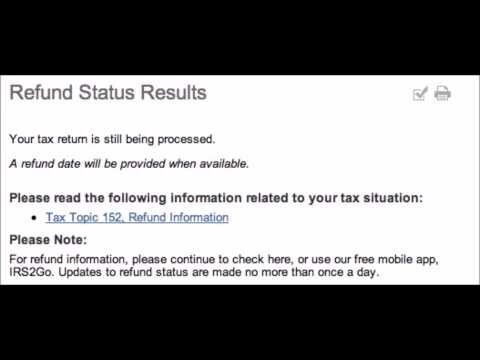What Are Billable Hours? Time Tracking Tips To Get You Paid
Contents:


While the firm still has to pay the lawyer, if a client cannot be billed for the time, non-billable hours are actually costing the law firm money. A time tracking policy can ensure time spent on non-billable tasks does not get out of control. In some industries, the non-billed hours outweigh the total billable hours.
Why you should unlearn certain valuable legal skills – ABA Journal
Why you should unlearn certain valuable legal skills.
Posted: Tue, 11 Apr 2023 07:00:00 GMT [source]
But then going through, seat to seat, appraisals did not mention it too much. No matter what you voided check, Smokeball will transform your firm and business like no other law firm software. This can eventually help you cut back on non-billable tasks and increase your productivity. While it might be faster to bill for blocks of time, list tasks separately for accuracy, accountability, and clarity to clients.
Firm of the Future
Tracking your billable hours by the project will also help you determine your most profitable clients. Then, you can work towards maintaining those relationships, further strengthening them. After you’ve decided on your choice of hourly billing practice, you can adjust your time tracking system to align with your billing cycle. Now that you understand what the billable hour requirement is, you need to start tracking your billable hours.
Automate Your Law Firm’s Efficiency with Legal Workflow … – Lexology
Automate Your Law Firm’s Efficiency with Legal Workflow ….
Posted: Thu, 06 Apr 2023 07:00:00 GMT [source]
If you are new to the business, here is an explanation of the sticky note method. Using the sticky note method to keep track of your time simply means one more sticky note on the file where everyone working on the case can track his or her time. When the sticky note is full, write the client’s name on it, and put it on the desk of whoever is responsible for invoicing. You also have client Y, who only required a handful of changes, which resulted in about six non-billable hours.
Billable Hours Per Week
By recognizing the value of non-billable hours, you create a positive work environment and foster a culture of appreciation and recognition. Trainees get inducted into this way of life from day one, regardless of their firm’s take on billable hours targets. If you run a team, tracking your non-billable hours will help you figure out where your team members are the most productive. For example, let’s say client X has asked for a multitude of changes to a project where you spent 15 extra non-billable hours for the month. Tracking your non-billable hours may seem counter-productive, but it’s essential to running an effective business.
- Dedicated time spent on tasks directly related to a client’s case can be billed for the most part to the client.
- By knowing exactly which tasks constitute billable hours and how to keep track, you’ll be ready and set to optimize everything from workflows to invoicing.
- Education and training are essential, but these periods should be limited to only a few hours per week or per month.
While there is no requirement for spending time on non-billable hours, every minute spent on non-billable hours eats into the available time to complete billable hours. When maximizing the number of billable hours an attorney has, it becomes necessary to increase the number of lawyer work hours worked overall. This means that some lawyers are working anywhere from 70 to 80 hours per week every week just to meet their billable hour minimums which can range between 1700 and 2300 hours a year. If an attorney worked 40 hours a week for 52 weeks of the year – they would work 2,080 hours a year. Because time is spent on other tasks, lawyers end up working far more than 40 hours a week, just to meet their requirements.
Create a spreadsheet or start using time-tracking software
Once a law firm has paid all of its overhead and expenses, the profit/equity leftover is shared amongst the equity partners. If lawyer hours in the law firm didn’t include enough billable hours, equity partners could face a serious decline in their compensation. Although policies for billable hours vary from one company to another, the idea is that the client is only charged for time that the employee is performing work for them. So, for example, breaks, personal time, vacation time and meetings about unrelated matters are not billable.
The more billable hours you work, the more revenue you can generate for your business. Billable hours for lawyers are the attorney work hours billed to clients for activities that are directly related to client matters. Attorney work not related to client matters, such as professional development, client development, and office management, is considered non-billable. Track your billable time accurately—and in real time, if possible.
- Different bands of lawyers at different firms cost different amounts and clients would pay by the hour for a lawyer’s advice and behind-the-scenes work on their deal or case.
- You can choose from a wide pool of competent virtual assistants to match your requirements and budget.
- On the other hand, non-billable hours are those spent doing general activities that are centered around the business in general rather than for one particular client.
- However, similar to law firm billing, many firms still have CPAs regularly track and bill their hours.
- If possible, you can reorganize workload so that no one is overwhelmed with work.
- The billable hours’ template does not account for non-billable hours.
One downside to billing clients hourly is that some professionals may feel pressure to work more hours than they can work to get the desired amount paid. This can lead to fatigue and other health problems, as professionals work long hours without breaks. Billable hours incentivize professionals to work efficiently and quickly, as they are paid for the time they spend working on a project. This can lead to greater productivity and better quality work, as professionals are likely to put their best effort into projects when they know they will be compensated for it. Billable work embraces all tasks that are directly related to the client’s project. It includes every unit of work that you can put on your invoice to the client.
In this case, the client will pay the consultant for eight hours even if they have spent a total of ten working hours. More billable hours will help you balance the overall cost of a project. Make sure you and your team count every minute you spend on a project. It may be a little overwhelming at the beginning, but it will come easily once you make it a habit. When you start tracking billable time, you can also measure your billable utilization rate – to understand how much revenue-generating work your teams are carrying out.
The utilization rate for law firms and legal professionals
Taking regular breaks is important and can increase productivity overall. However, tracking employee time can help you make sure you and your team are not delaying tasks unnecessarily. But, besides the utilization rate, there is another metric in the law industry. It’s called the realization rate – how many hours an attorney tracks compared to the fees that are collected.

While filling individual consultant utilizationspreadsheets, most consultants thoroughly focus only on their chargeable work. The consultants ignore and deny the need for teamwork to increase their billable time, which ultimately jeopardizes the consulting firm’s credibility. Billable time is an alternate term used to describe billable hours. Billable hours can be of any percentage value e.g. 80%, 90%, or even 100%. In 100% billable hours, the client pays a consultant for every hour they spend on the project. To state a billable hour example, suppose the contract of a ten-hour project states that 80% of total working hours will be considered billable.
Many different time-tracking software options, such as Workstatus, Desktime, and Hubstaff, can help you track and manage your time more effectively. When hours are tightly regimented, employees may feel pressured to continuously work long hours to maintain their positions. Being able to bill clients on an hour-by-hour basis provides tremendous flexibility for businesses.
Prepare a detailed invoice
While the concept is simple, tracking billable hours may not be. Some states have laws and ethical rules regarding solicitation and advertisement practices by attorneys and/or other professionals. The National Law Review is not a law firm nor is intended to be a referral service for attorneys and/or other professionals. The NLR does not wish, nor does it intend, to solicit the business of anyone or to refer anyone to an attorney or other professional. NLR does not answer legal questions nor will we refer you to an attorney or other professional if you request such information from us. They are designed to ensure financial compensation for any time spent on individual client cases.
By tracking all your time (non-billable time included), your working day will be more productive, and you can be more efficient. It’s easy to forget to record your daily project-related and billable tasks. Many small businesses use a monthly invoice schedule and send out their invoices at the end of each month. Other companies invoice their clients twice a month, based on the volume of work tasks.
Instead they are assigned to the ones which generate additional cash flow. Traditionally businesses used spreadsheets to register and track time. It requires employees to enter the working hours manually, which ultimately increases your non-billable hours, and is likely to result in less accurate data. Now, when you’re working on a project, how do you know how many hours to bill your client for? With time tracking set up, you can calculate billable hours as well as track any non billable time.
They may feel immense pressure to skip vacations and not take sick days in order to satisfy requirements. Billable hours are what generate the income of a law firm, so that it can pay salaries and overhead costs. As a paralegal, when you are working billable hours, you are making money for your firm, and employers love employees who make them money.
Among other benefits, having a project log will help you record your project history and understand any changes made to the project. Once we multiply the quotient by 100, the result will be the realization rate of 75%. By subscribing to ProLytics Consulting Group, you will receive the newest updates from us regarding our services, any changes, events, news and more. As long as the communication is there and you are trying to find non-chargeable work, that is enough.
Given that the internet is the number one reason for the increasing levels of procrastination, you need to find an effective way to tackle it. Start by installing browser extensions that limit how much time you spend on time-wasting websites. A study shows that the average Brit spends 218 minutes a day procrastinating. In another survey, 88 percent of the workforce admitted to procrastinating at least one hour every day. Apart from knowing exactly how much time teams will require to deliver a project, you can also determine the budget for the project.
Attending any meetings with people who aren’t yet contracted clients. Spend an hour creating an email campaign you plan to use to market your services. There’s no one-size-fits-all list of metrics every firm should track. You need to consider what matters most to your firm and look for ways to improve the data you collect and how you use it. Enabling organizations to ensure adherence with ever-changing regulatory obligations, manage risk, increase efficiency, and produce better business outcomes. It’s a great way to avoid letting work hours go uncompensated.

Our team brings decades of successful implementation experience across industries and verticals. We are committed to working closely with customers to find and deliver value-added technology solutions that solve their one-of-a-kind challenges. When I was a trainee, there was no mention of billable hours really. It was mentioned in conjunction with being told that as trainees we had very low targets.

Comments are closed.